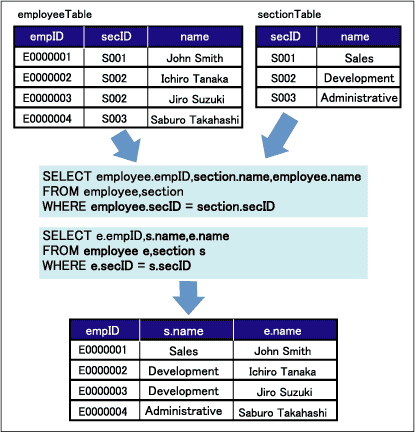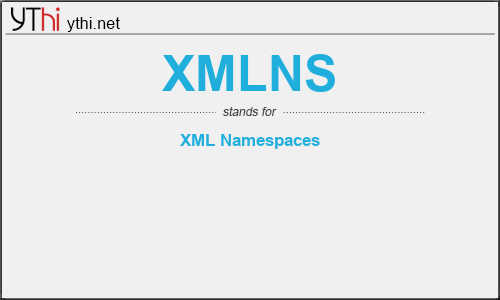What does XMLNS mean? What is the full form of XMLNS?
The Full Form of XMLNS is XML Namespaces.
XML namespaces provide a simple method for qualifying element and attribute names used in Extensible Markup Language documents by associating them with namespaces identified by URI references.
As an example, let’s assume we have an RDB with a table of the following structure (employeeTable, sectionTable). What kind of SQL statement would you create to obtain a list of Employee ID, Employee Department Name, and Employee Name? If we merged employeeTable and sectionTable with the secID column, then we would be able to obtain a list of employee IDs, employee departments and employee names. However, since the name column and secID column exist in both tables, we would have to designate the table name before the name and secID columns, or designate the alias of the table in order to clarify the table of the name and secID columns in question.

XML Namespaces
So, what happens when this data is expressed in an XML document? Let’s take two XML documents, and see how we can create a list showing employee ID, employee department and employee name using XML.
First, we will create a root element (employeeList element) and an element (personList element) to summarize employee information for one individual. You might have thought about creating an employee ID element (empID element in employeeXML document), department name element (name element in sectionXML document) and an employee name element (name element in employeeXML document) as child elements, but there’s a problem with this method. The problem is an “element name conflict.” The name element in the employee XML document is defined as an element representing the employee’s name, whereas the name element of the section XML document is defined as an element representing a department name. In merging these two XML documents, you will get a name element that has two separate meanings. While a human might be able to tell the difference between these two “name” elements and what they represent, computer systems cannot determine what these name elements are supposed to mean. The XML 1.0 specification never considered the merging of different types of XML documents (vocabularies) to create a new XML document, which led to this type of name conflict problem.


Leave a Reply
You must be logged in to post a comment.